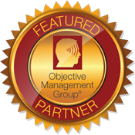While the foundation of consultative selling is to enhance client profits, it’s near impossible to do that if the customer doesn’t trust you first. And establishing yourself as a trusted advisor starts with your very first point of contact with your client.
If you want to achieve the coveted “trusted advisor” status, follow these three consultative selling tips.
1. Target the right person
The consultative sales strategy works best when selling to CEOs and business leaders. These are the people who care about business profits. If you fail to reach the right person, that is, the one who can make big business decisions to impact those profits, then your positioning statement is going to fall on deaf ears.
“Middle to lower management are usually not driven by profit outcomes,” says Alex Chan, Head of Learning and Development at SalesStar Global. “They are driven by the supplier’s costs, their performance as a supplier, and the performance of the products.”
Approaching the wrong person is where many salespeople come unstuck. It’s not an uncommon mistake, especially if the salesperson feels they have a better chance of making the sale if they target someone they’re more comfortable talking to.
For example, a technically minded salesperson might prefer to target the chief engineer of a manufacturing firm because they are more comfortable talking to a fellow technical person. The problem with this is that the chief engineer is a user. He or she isn’t interested in business profitability, they just want to know if your product works; they want to know the features. Trying to sell to them on profit enhancement will fall flat on its face.
“The first thing to understand is that we’ve got to approach the right level of senior management,” says Alex. “As a rule, sell features when talking to the users of the product or service and sell profit enhancement (i.e. consultative strategy) when dealing with senior management.”
2. Cut through with your value proposition
Researching your customer’s industry is key to consultative selling. Why? Because identifying a common problem that your client resonates with is a crucial part of establishing yourself as a trusted advisor, rather than a product-feature seller. Moreover, this approach will help you get the cut through you need to motivate a client to meet you.
“It comes down to knowing how to position ourselves when we first manage to get through to them, and to be able to articulate our value proposition,” says Alex.
This step—the opening positioning statement—is vital for a salesperson to establish themselves as a trusted advisor:
“Your value proposition must focus on the client’s outcomes, not your product,” Alex says. “Centre it around the results you’ve got for other people and the likely outcomes you can get for them if they consent to see you.”
Here’s what it might look like:
“Hi Mr/Ms CEO, thanks for taking the time to pick up the phone. Look, we’ve been talking to a lot of chief executives, like yourself, who are very concerned. This is because they realise that sales results could be better, but they’re not quite sure where to actually start to go about improving them.”
The value proposition quickly follows:
“Working with other manufacturers like yourselves, we’ve been able to get results of between 15 and 40 per cent increase in sales within the first year, and substantially greater sales from the second year on.
“Now, what I’d like to do is to take some time to get to know you, come and see you, and after chatting with you for about 20 minutes, I should get an idea as to whether or not I can get a similar result here as well with you. But if I can’t I’ll tell you. Is that fair enough?”
What’s happened here? We’ve found the right person to talk to. We’ve stated an emotional reaction to a common problem—a problem that (hopefully) resonates with the client. The value proposition is focused on what the outcome would be (increase sales of between 15 to 40 per cent) without mentioning the product at all, and we’ve shot for an appointment with the promise that if we couldn’t help, we’d let them know.
“We see people using this approach daily to establish themselves as someone looking to help the customer, not sell to them,” says Alex. “Followed by evidence to support their claim, they are able to get the cut through that they need to get the customer interested.”
3. Use Socratic questions to build motivation and trust
Emotions are responsible for 85 per cent of decision making, including purchasing decisions. In the world of sales, this means that emotions lead to buyer motivation. As discussed in previous blogs, the most effective emotions for salespeople to harness are pain and gain.
The takeaway? Consultative selling relies on uncovering a problem (pain) or opportunity (gain) that impacts a customer’s business profits.
“As senior managers see it, if there is no unnecessary cost being incurred, there is no problem and therefore no motivation to buy,” says Alex. “Consultative selling takes the client on a journey to allow them to discover otherwise.”
Using a structured, open-ended line of questioning, a consultative seller can help customers discover a problem and understand the impact and consequence of that problem if things don’t change. What’s more, that line of questioning also fires up the emotional part of their brain.
“We want them to feel something along the lines of curiosity, engagement and ‘tell me more’,” says Alex. “The moment they think or feel or say that, then we know that we’ve got them engaged.”
Last of all, because the consultative approach leads the customer to make their own conclusions, the salesperson’s role becomes that of an advisor to the customer, rather than the “hard seller” that many of us associate with sales.
Unfortunately, the most common mistake salespeople make is following the wrong line of questioning. Failing to ask the hard questions, or not structuring their questions correctly, can result in the salesperson not finding a problem.
Establishing trust is sometimes a tricky thing, but if we boil the process down into a simple equation, this is what it would look like:
Right person + right value proposition + right line of questioning = trust
And remember, so long as your client’s profitability remains your core focus, you’re already halfway there.









